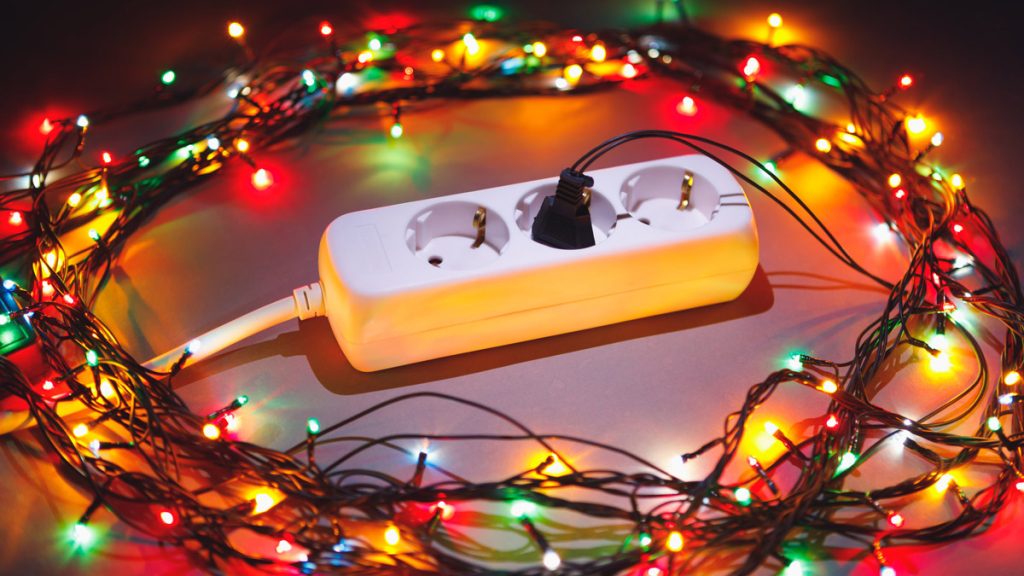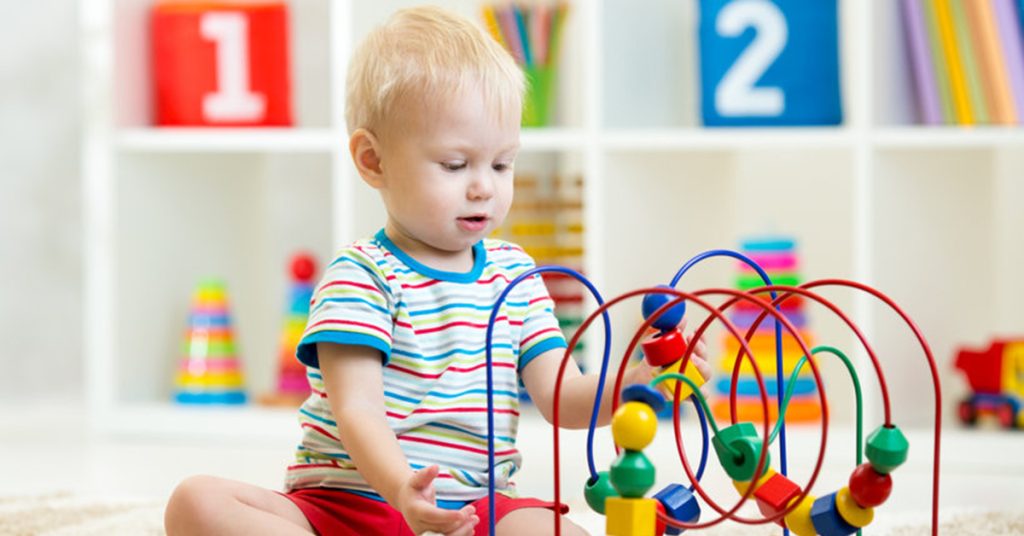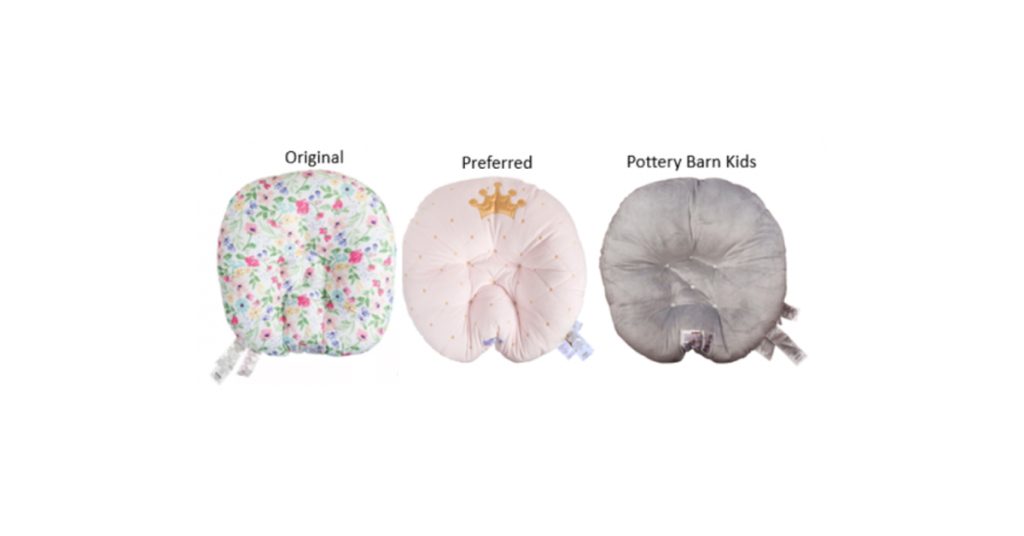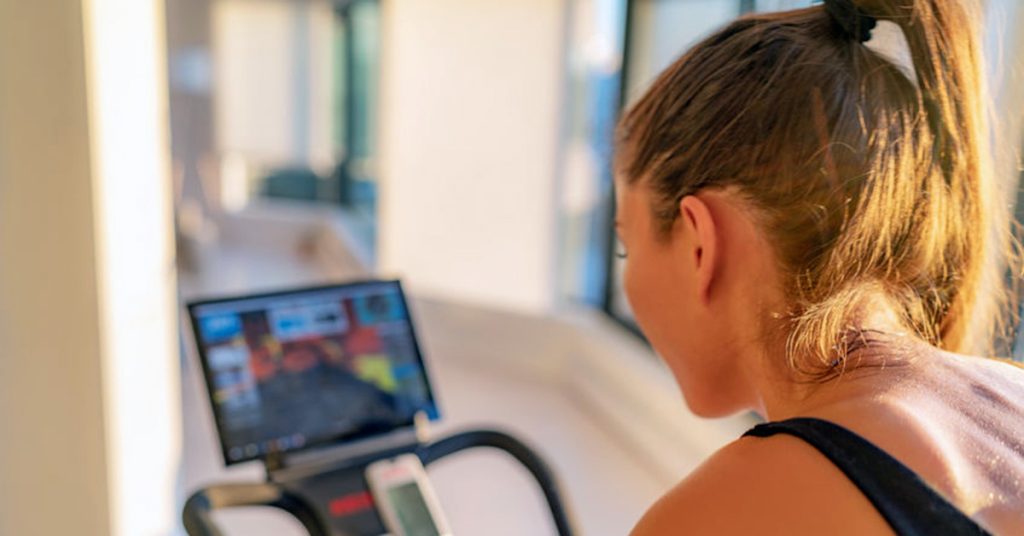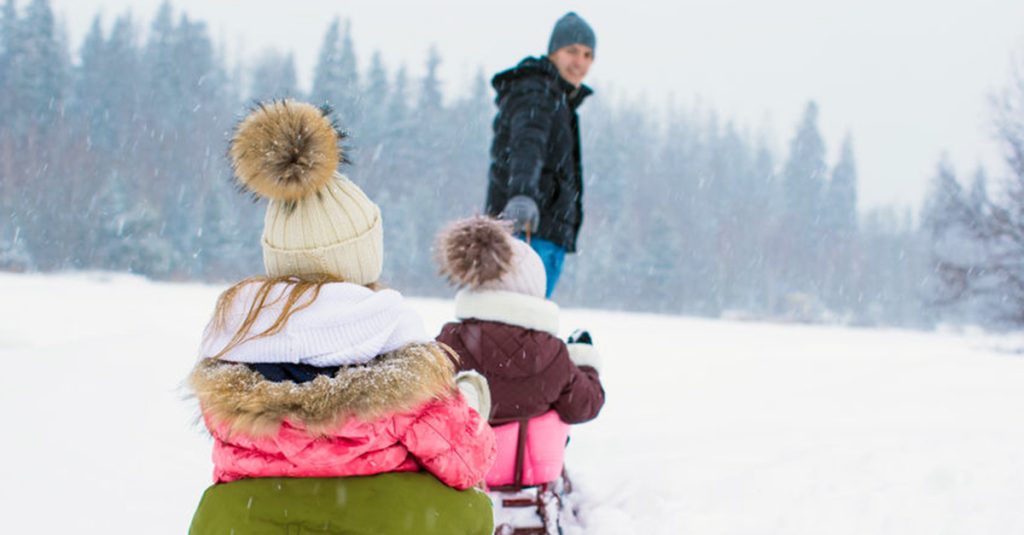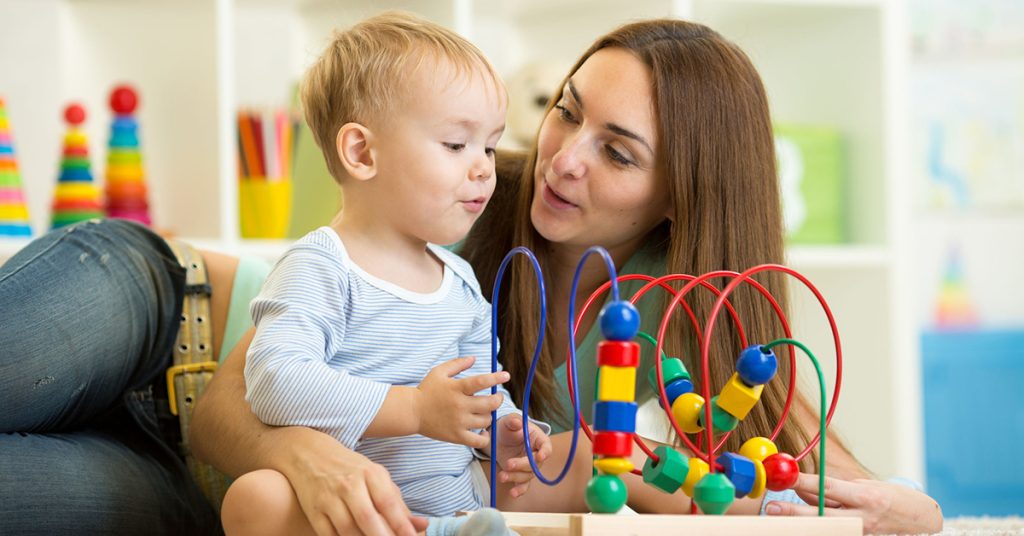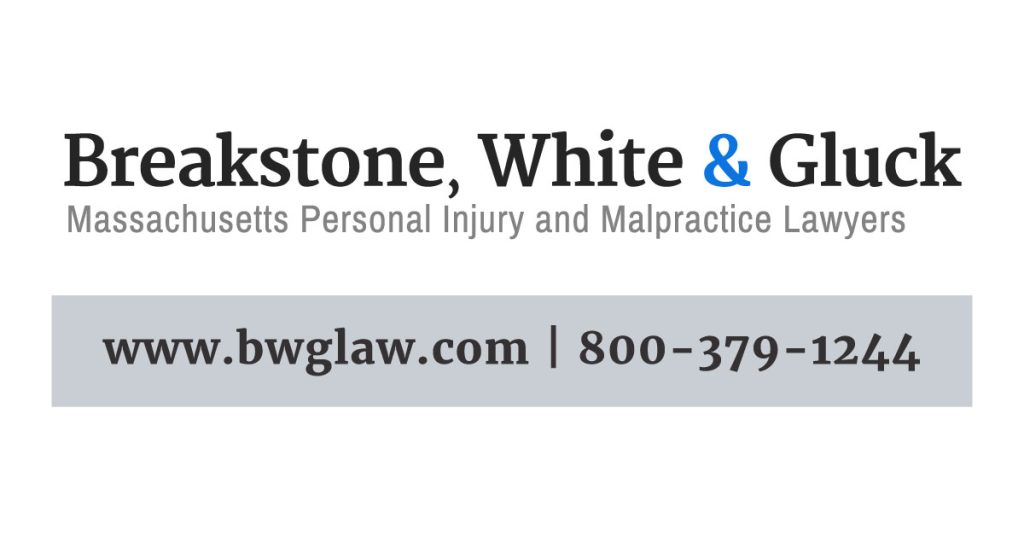Products Liability
Why You Should Pay Attention When There is a Recall of Your Vehicle
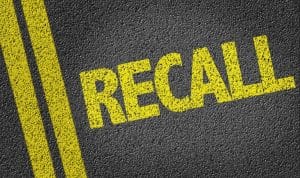 Government regulations aimed at promoting safety are crucial due to the high number of motor vehicles on U.S. roadways. The primary goal is to save lives by ensuring the safe operation of vehicles. When manufacturers discover a defect or issue that affects the intended functionality of a vehicle, they may initiate a recall.
Government regulations aimed at promoting safety are crucial due to the high number of motor vehicles on U.S. roadways. The primary goal is to save lives by ensuring the safe operation of vehicles. When manufacturers discover a defect or issue that affects the intended functionality of a vehicle, they may initiate a recall.
Vehicle recalls impact millions of drivers annually. It is important to understand your legal rights if you sustain injuries in a car accident caused by a recalled vehicle or if your own vehicle is subject to a recall. It is crucial to be aware of your legal rights if you are involved in a car accident caused by a recalled vehicle or if your own vehicle is subject to a recall. Understanding these rights will help you navigate the legal process and seek appropriate compensation for any injuries sustained.
What are a consumer’s rights if they are dealing with an auto defect or recall?
As a vehicle owner, it is essential to understand and assert your rights. The first step is to check for any recalls associated with your vehicle. If a safety-related defect is identified in the design or manufacturing of an automobile, the manufacturer or the National Highway Traffic Safety Administration (NHTSA) may issue a recall. This ensures that owners of the affected vehicles have the right to bring their cars to authorized dealerships for free repairs or replacements of the defective parts.
If your vehicle was initially defective at the time of purchase and caused injuries while being used as intended by the manufacturer, you may have grounds for a product liability claim in Massachusetts. Unlike many other types of lawsuits, in a product liability suit, there is no need to prove that the manufacturer acted negligently or made mistakes during the production of the car. Simply demonstrating that the vehicle was defective, and that the defect caused harm, may be sufficient to pursue a claim for compensation.
Understanding your rights as a vehicle owner empowers you to take appropriate action in the event of a recall or if you have suffered injuries due to a defective vehicle. It is advisable to consult with a qualified attorney who focuses on product liability to evaluate your case and determine the best course of action to seek the compensation you deserve.
What are your options if your car has been recalled?
Taking action and reporting any potential safety defects in your vehicle or equipment is crucial to promote road safety. By reporting such concerns to the NHTSA, you initiate an essential first step towards addressing the issue and improving overall safety on our roads. If the agency receives multiple reports from different individuals regarding the same product, it may indicate the presence of a safety-related defect that warrants an investigation.
To make it convenient for consumers to report suspected safety defects to NHTSA, the agency provides two avenues for filing such complaints. These options are designed to ensure ease of access and encourage individuals to report their concerns promptly. By utilizing these reporting mechanisms, you contribute to creating a safer environment for all road users. Reporting safety defects is an important responsibility, and your action plays a significant role in helping identify and address potential risks associated with vehicles and equipment.
What can happen if you choose to not get your recalled car fixed
Failing to address a vehicle recall and subsequently being involved in an accident can expose you to legal consequences. Injured parties, including motorists, cyclists, or pedestrians, have the right to file a negligence claims if they can demonstrate that your negligence in ignoring the recall contributed to the accident. As the owner of a vehicle, you have a duty to maintain the vehicle in a reasonably safe manner. This includes having product defects promptly remedied by an authorized dealer.
If your vehicle is in a collision, and the injuries from the collision were caused at least in part by a defect in the vehicle, and if you had failed to have the vehicle repaired, you may have exposed yourself to liability. If a claim is brought against a manufacturer or dealer, the defendant may bring you into the case (“implead” you). And you may be found jointly and severally liable if you are found to have been negligent.
How can a Boston-based product liability attorney help with these matters?
If you believe you have a legal claim to pursue concerning a recalled vehicle and any injuries you may have sustained because of that vehicle, it is crucial to consult with an experienced product liability attorney. It is essential that you act swiftly, so critical evidence is not lost or destroyed. Preservation of evidence is extremely important, and failure to do so may result in a finding against you for “spoliation.” It is important to keep in mind that the statute of limitations for a personal injury lawsuit in Massachusetts is three years.
When selecting a product liability lawyer, it is crucial to choose someone who possesses a thorough understanding of the intricate laws and nuances within this heavily regulated field. At Breakstone, White & Gluck, we have the necessary resources and experience to effectively evaluate and handle your case. Our knowledgeable attorneys have a well-established network of experts in product liability who can serve as consultants and witnesses when needed.
Our firm understands the importance of taking care of the necessary legal details, ensuring that you have the peace of mind to concentrate on your healing process. We are committed to supporting you throughout the legal process, providing the necessary guidance and advocacy to pursue the compensation you deserve. To schedule a free consultation, call us at our office in Boston at 800-379-1244 or 617-723-7676, or use our contact form.
Social Media and Product Liability
 The Internet has revolutionized global connectivity, enabling individuals worldwide to connect, share ideas, and engage in advocacy efforts without significant resources or specialized technical skills. This remarkable ability to communicate online, whether through blogs, social media platforms, or educational and cultural platforms like Wikipedia and the Internet Archive, is not a mere coincidence. It stems from the recognition by Congress that in order for user-generated speech to flourish on the Internet, it is crucial to safeguard the services that empower and facilitate such expression.
The Internet has revolutionized global connectivity, enabling individuals worldwide to connect, share ideas, and engage in advocacy efforts without significant resources or specialized technical skills. This remarkable ability to communicate online, whether through blogs, social media platforms, or educational and cultural platforms like Wikipedia and the Internet Archive, is not a mere coincidence. It stems from the recognition by Congress that in order for user-generated speech to flourish on the Internet, it is crucial to safeguard the services that empower and facilitate such expression.
However, while securing free speech is important, it is critical that proper protection is taken in order to safeguard users, especially children, from harmful content. Revelations brought forward by whistleblower Frances Haugen and a series of studies have triggered a wave of class actions and lawsuits against social media companies. These lawsuits aim to hold these companies accountable for the alleged harms caused to children, particularly teenage girls, by their platforms’ algorithms. The disclosed internal documents suggest that social media platforms were aware of the potential harm to mental health, including issues related to body image, caused by their platforms.
What is Section 230?
Section 230 of the Communications Decency Act protects the freedom of expression on the internet and shields online intermediaries from liability for the speech of others. It recognizes that individuals should be responsible for their own actions and statements online, while platforms and services should not be held accountable for the content generated by users. The law promotes user speech by preventing most civil suits against users or services based on third-party content.
Section 230’s protections are not absolute and do not cover companies that violate federal criminal law, create illegal or harmful content, or infringe on intellectual property rights. For over 25 years, Section 230 has played a vital role in safeguarding the free and open internet. It has been instrumental in protecting small blogs, big platforms, and individual users from lawsuits related to forwarding email, hosting online reviews, or sharing objectionable content.
What are the issues with Section 230?
While Section 230 of the Communications Decency Act provides crucial protections to social media platforms by shielding them from liability for user-generated content, it does not address the issue of negligent design and the potential role of these platforms in fostering illicit and dangerous content on the internet.
Section 230 primarily focuses on establishing a legal framework that encourages the free flow of user speech by limiting the liability of platforms for the actions and statements of their users. However, critics argue that it fails to adequately address the responsibility of social media companies in designing and maintaining their platforms in a way that prevents the proliferation of harmful or illegal content.
There is growing concern that social media platforms, while not directly responsible for the content posted by users, may have a level of accountability when it comes to their platform design choices and policies. Negligent design refers to situations where the design or functionality of a platform contributes to the facilitation or amplification of illicit and dangerous content, such as hate speech, disinformation, harassment, or illegal activities.
Critics argue that social media companies should be more proactive in implementing robust moderation mechanisms, content policies, and algorithmic systems to prevent the spread of harmful content. Negligent design claims suggest that platforms have a duty to consider the potential risks associated with their design choices and take reasonable measures to mitigate those risks.
Can I file a product liability claim against a social media company?
Product liability lawsuits have traditionally been employed to seek justice and hold manufacturers accountable for injuries caused by defective products. However, the application of product liability laws in the context of social media websites is an evolving area of legal exploration. While social media platforms may not fit the traditional definition of a physical product, there are growing discussions around the possibility of using product liability theories to address the harm caused by these platforms.
Product liability lawsuits generally require demonstrating that a product was defective and that the defect caused the injuries suffered by the plaintiff. In the case of social media companies, the concept of a “defective product” may be expanded to include design flaws, algorithmic biases, inadequate content moderation, or the failure to implement sufficient safety measures on their websites. These factors can contribute to the proliferation of harmful content, including misinformation, hate speech, cyberbullying, or other forms of online harm.
To pursue a product liability claim against a social media company, it would be necessary to establish a causal link between the platform’s online design or policies and the harm suffered by the plaintiff. This could involve demonstrating that the platform’s intentional or negligent actions created an environment that facilitated the harm or failed to provide adequate protections for users.
Finding justice through product liability lawsuits against social media websites may provide an avenue to hold these platforms accountable for the harm caused by their design choices, policies, or implementation failures. However, it’s important to recognize that this area of law is still evolving, and legal challenges may arise in applying traditional product liability principles to digital platforms. Discussions around the limitations of Section 230 and the need for regulatory reforms aim to address these concerns and hold social media platforms accountable for their role in nurturing illicit and dangerous content on the internet.
The Boston attorneys at Breakstone, White & Gluck are invested in this growing and developing form of holding social media websites accountable for certain damage and harm caused to children, particularly teenage girls, by their platforms’ algorithms. If social media platforms are aware of the potential harm to mental health, including issues related to body image, caused by their platforms, then they need to be held liable so that families and individuals may receive restitution.
If you have been injured or suffered a loss as a result of a defective product, the skilled product liability lawyers at Breakstone, White & Gluck are here to assist you. We have extensive experience in investigating injuries caused by defective products, including toys and vehicles. Our dedicated team is committed to providing compassionate representation to each client we serve. We understand the importance of acting promptly to protect your rights if you believe you have a case. To arrange a free consultation with one of our knowledgeable Massachusetts lawyers, please call our office in Boston at 800-379-1244 or 617-723-7676 or complete our contact form.
Tesla Has Highest Number of Crashes Involving Self-Driving Cars, Driver-Assist Systems, New Data Shows

New data shows self-driving cars and driver-assisted systems were involved in hundreds of car accidents over a 10-month period. Tesla vehicles were tied to 70 percent of these car crashes.
Days after expanding its Tesla safety investigation, the federal government has released 10 months of data showing nearly 400 crashes involving self-driving and driver-assisted vehicles, according to The New York Times. Tesla vehicles were involved in 70 percent of the self-driving and driver-assisted crashes.
Of 392 crashes, 273 involved Tesla vehicles operating with Autopilot, Full Self Driving or related features, according to the National Highway Traffic Safety Administration (NHTSA). Six people were killed while others were injured. The crashes ranged from serious collisions to fender benders or smaller incidents.
- Honda vehicles were involved in 90 incidents.
- Waymo, a driverless taxi service in Arizona, was involved in 62 crashes. The service is owned by Google’s parent company.
- The G.M. Cruise taxi service was linked to 23 accidents in the San Francisco area.
- Subaru reported 10 crashes; Ford, G.M., BMW, Volkswagen, Toyota and Porsche each reported 5 or fewer.
Last year, the NHTSA issued an order requiring automakers to report car accidents involving vehicles with driver-assist systems or fully-automated vehicles being tested on public roads. This is the first data release under the order and an NHTSA official cautioned the public not to make conclusions yet.
The data covers just 10 months, but provides no context on the total number of vehicles each manufacturer has on the road with automated technologies.
Tesla has about 830,000 vehicles with driver-assisted technologies on the road, according to The New York Times. But other companies, such as Ford and GM, also have technologies that allow hands-free driving in certain situations. They have sold fewer models.
In addition, automakers have long sold cars, trucks and SUVs with some level of driver-assist systems, such as cruise control or automatic braking when traffic ahead slows. With this data release, the NHTSA said it plans to keep collecting data on auto crashes involving these features and technologies, as a guide for future safety requirements.
NHTSA Expands Investigation of Tesla Autopilot Feature
The data comes as the NHTSA investigates years of car crash reports involving Tesla’s Autopilot feature. On June 9, the agency announced it was expanding the probe to include all four Tesla cars – Model S, Model X, Model 3 and Model Y – from 2014 and 2021, according to The New York Times.
The agency said it was upgrading its preliminary evaluation to an engineering analysis, a step required before a safety recall, according to The New York Times. The NHTSA has set a one-year timetable for the review.
The Texas-based company designs the world’s most popular luxury vehicles, many of which use the Autopilot technology to perform key aspects of driving, such as steering, accelerating and braking automatically within the lane. The NHTSA is investigating whether the Autopilot fails to prevent drivers from diverting their attention from the road and engaging in other unsafe behaviors.
This wouldn’t be the first Tesla recall. In November 2021, Tesla recalled almost 12,000 vehicles from its Full Self Driving beta test. This was a version of Autopilot designed for city driving. The company reported a software update could unexpectedly activate a vehicle’s emergency brakes.
Tesla Self-Driving Crash and Sleeping Driver Report in Massachusetts
Tesla crashes have made headlines across the country.
There was a bizarre story on the sleeping driver traveling in a Tesla vehicle on the MassPike back in 2019. A driver captured video of another driver and his passenger traveling in a Tesla vehicle in the next lane. Both were in a heavy sleep.
State Police called the behavior “extremely dangerous” and said the driver would be subject to criminal charges if they ever identified and located him. That never happened.
But State Police caught the driver in a Tesla self-driving crash in West Bridgewater in 2020.
According to news reports, a state trooper pulled over a college student in an SUV on Route 24 in West Bridgewater. A Tesla driver slammed into the trooper’s cruiser, then hit the 21-year-old’s vehicle as she reached for her registration. The driver was reportedly operating in Tesla’s Autopilot mode, according to a NBC Boston report. He was charged with negligent operation.
Free Legal Consultation – Boston Car Accident Lawyers
Breakstone, White & Gluck has over 125 years of combined experience successfully obtaining record recoveries for clients injured by negligent driving. Our attorneys are experienced in handling cases involving car accidents and commercial truck crashes across Massachusetts. We represent clients at all stages of motor vehicle accident cases, from insurance claims through to trial and appeal, if necessary.
For a free legal consultation, call 800-379-1244 or 617-723-7676 or use our contact form.
Deck the Halls, But Decorate Safely
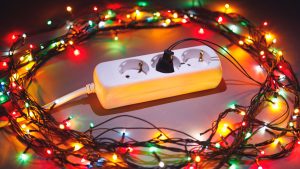
Immediately replace holiday decorations and power appliances that are in poor condition. Another year of use could result in injury.
Though a time for joy, the holidays can also set the stage for potential injuries, as we rush, stress, decorate and wrap. Surprisingly, you may discover some of the most dangerous hazards right in your own home, among the holiday decorations and boxes you pull of storage to deck the halls.
While colorful and festive, holiday decorations contribute to many injuries each year. During 2019, nearly 15,000 people were injured in holiday decorating incidents and treated in emergency rooms, according to the Consumer Product Safety Commission (CPSC). Nearly half of these injuries involved falls. Many others are injured each year after the decorations are hung, by defective or poorly-made products or decorations that are set up unsafely.
Unlike some situations, you have control of your home and can take steps to protect yourself, your family and holiday guests.
Start by simply walking around your home and checking your holiday decorations and your Christmas tree, if you have one. Make sure all your decorations are out of reach of young children and put away all tools, such as ladders and hammers, or boxes you may have left out while decorating.
Watch for unsafe products, such as those which arrive in questionable packaging or contain broken or small parts. Manufacturers have a responsibility to design products and provide reasonable warnings for safe use. There can be a high cost when manufacturers or others in the supply chain neglect their responsibilities in the rush to sell, or when individual sellers on Craigslist or Facebook Marketplace offer used goods without the original packaging. But it can happen and ruin a family’s holiday – unless you recognize the risk and act to prevent injury.
Use Caution While Hanging Holiday Decorations
Still have some decorating to do? Remember not to rush. During a season of merry and bright, you want to be safe and avoid injury. Holiday decorating can cause a range of injuries, from passing muscle strain to broken bones, though injuries can be much more serious, resulting in head injuries and even permanent disability. At a minimum, many people experience some muscle strain the next day after reaching and climbing. Planning can help!
So make a decorating plan. Team up with a family member or a friend so you have help carrying heavy boxes or using ladders or step stools.
Consider whether you are physically up for holiday decorating. As you get older, you may not be able to take on the same physical challenges. Acknowledge this before you start.
While you may be thinking, “Bah humbug,” you can still decorate. Just make a few adjustments for safety or to account for your late start. You can hang fewer holiday lights and hang them lower so you can stay off ladders, which are associated with many fall injuries during the holiday season.
Decorators of all ages should consider the cold weather. Even without snow or ice, you face a greater risk for muscle strain and injury during cold weather. It is never safe to climb a ladder in snow, ice, rain, winds or at night.
Water Your Christmas Tree Regularly
If you celebrate Christmas, your tree is the center of your holiday season, where you gather for family photos. But you should only purchase a live tree if you are home and have time to care for it.
Just as they bring joy, Christmas trees can cause devastation if they dry out and catch on fire. Each year, fire departments respond to an average of 160 Christmas tree fires across the U.S., resulting in injuries, deaths and millions of dollars in direct property damage, according to the National Fire Protection Association. These experiences can change a family and the holidays forever.
If you have already brought your tree inside, you may have cut 2 inches off the bottom before placing it in the tree stand. Now, your concern is watering the tree.
Regularly water your Christmas tree and keep it away from fireplaces and heating devices, which can accelerate drying out. The National Christmas Tree Association recommends that families check their tree daily and make sure the water level does not fall below the base of the tree.
Your Christmas tree stand is one of your most important holiday decorations in terms of safety. Choose one which can hold enough water to support your tree’s needs throughout the year. As a general rule, the association recommends stands provide one quart of water per inch of stem diameter.
If you are not up for a live tree, go artificial. Make sure your artificial Christmas tree is marked “flame-resistant.”
Watch for Defective Products and Check Holiday Extension Cords for Safety
Closely examine holiday decorations and equipment before you start decorating. Your trusted tools and supplies may have been recalled for safety since your last use or may not work well with newer products you have purchased.
Check ornament boxes for cracks; make sure ladders and foot stools are in good working condition, if you have to use them. Extension cords should be free from damage and cracks.
This is easy to forget. Many of us reach for extension cords after we start setting up decorations, not first. But here are a few points for safety on extension cords:
- Extension cords should be tested by a nationally recognized testing laboratory, such as Underwriters Laboratories (UL), Intertek (ETL) or CSA Group Testing and Certification. Similarly, holiday lights should also be tested.
- You should only use one extension cord at the most, so measure and buy one that meets your needs.
- Make it a habit to check for safety recalls before you plug your holiday extension cords in. Just visit www.cpsc.gov and search for extension cord recalls
- Replace your extension cords every few years. You trust these cords to light up your holiday and protect your family and home over the years, yet you expose them to more wear and tear than other products when you string them around your tree, furniture and take them in and out of storage each year.
Keep a Safe Home for Holiday Guests and Children
Consider what may be in a child’s reach or limit an older guest’s mobility. Move ornaments and decorations with small pieces and sharp edges out of reach. Remember children are curious and may pull at decorations or small broken lights found under a tree or plastic packaging you may have dropped while wrapping gifts. A child could find these, put them in their mouth and choke or suffocate – the worst thought for the holiday season.
Look beyond your holiday decorations as well. You may not be able to see all the hazards, so think about how your home products are powered. For example, flashlights and electric holiday lights may contain small button batteries, which a young child could find and swallow. So may your remote controls, including those you use to manage your holiday lights, and these can be too easy for children to open. You may treasure the holiday cards you receive, but these can also tempt children. Tuck away cards with removable pieces.
It is critical to think about fire prevention, especially before you invite guests into your home. Take a moment to test your smoke alarms. As we mentioned above, keep holiday decorations away from working fireplaces and stoves. Turn these appliances off when you have guests over and skip candle use for holiday ambiance or at the holiday meal.
Finally, we often hang or position decorations near entrances or hallways where people can enjoy them. This can bring joy, but block access to essential exits if a fire ever broke out. It is best to enjoy these somewhere else and keep all entrances and hallways clear.
Free Legal Consultation – Boston Personal Injury Lawyers
Breakstone, White & Gluck specializes in personal injury law, representing those who have been injured or killed by negligence across Massachusetts, including in Boston, Cambridge, Somerville and Arlington.
With more than 100 years combined experience, our lawyers have been recognized among the top personal injury attorneys in Massachusetts and New England. We represent clients in all areas of personal injury law, including injuries and wrongful death resulting from defective products.
If you have been injured by someone else’s negligence, learn your legal rights. For a free legal consultation, contact Breakstone, White & Gluck at 800-379-1244 or use our contact form.
Don’t Rush; Reminders to Help Massachusetts Families Buy Safe Holiday Toys in 2021
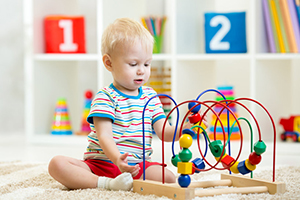
Don’t rush your holiday toy shopping. Take time to read and follow age-appropriate labels before you buy toys.
Many of us are feeling quite stressed about holiday shopping as we watch the news. Still, when you shop for a child, safety is essential. Slow down and look for a fun, safe and age-appropriate toy that will bring joy, not injury, into your home.
Read Age-Appropriate Warning Labels, Toy Packaging and Online Descriptions
You may think you are buying a safe because the toy was featured on a morning news program or has received top reviews online. But despite your best intentions, you may not actually be purchasing the same toy. To avoid buying a so-called counterfeit toy, look for reputable sellers, such as department stores. Try to purchase from brick-and-mortar stores.
Before purchasing or at home, closely examine the packaging on the toy and make sure it matches the manufacturer’s online description. If you purchased the toy online, the toy packaging should also match the description on Amazon or the online marketplace. Once the toy arrives, open and inspect the box contents.
Everything should be consistent, including the age-recommendation labels.
Check for Toy Recalls
The packaging is a tool to help you shop, as is the CPSC website, which you can check for toy safety recalls. In addition to recalling toys, the CPSC has also recalled many inclined infant sleepers over the past two years. Last summer, the commission approved a new federal safety standard for infant sleep products which will take effect in mid-2022. Here is one of our recent blogs on infant sleep products.
U.S. Toy-Related Injuries and Deaths by Age 2018-2020
No one wants to think about the possibility of a child suffering an injury while playing with their own toys. Yet this is a risk in when so many toys are sold online through Amazon, Ebay and other online marketplaces. Independent sellers can sell on these sites or quickly build their own websites, optimize them in the search engines, then close sites down.
Between 2018 and 2020, 50 children were killed in toy-related accidents across the U.S., according to CPSC data released in May 2021. Many children suffered suffocation and other injuries in accidents involving toys with small parts, balls, stuffed animals or accessories. Two children drowned on water toys. Seven children died in accidents involving non-motorized scooters and two were killed on nonmotorized riding toys.
In 2020, nine children were killed and nearly 150,000 children age 14 and younger were treated for toy-related injuries in hospital ERs. Here is a breakdown of toy-related injuries by age during 2020:
- Children under 5 suffered 40 percent of all toy-related injuries.
- Children age 12 and younger suffered 73 percent of toy-related injuries.
- Children age 14 and younger suffered 75 percent of toy-related injuries.
Common Toy Shopping Mistakes
As we have discussed, you can reduce the risk of injury in your household by reading age recommendations and carefully inspecting toys and packaging. But you can also challenge yourself if you have these thoughts:
Buying Holiday Toys Because Just They Are Available or Priced Right
Earlier this month, the Toy Association shared positive news: 76 percent of parents surveyed said they read age recommendations before buying toys.
However, many can be swayed. About 65 percent of parents said they may buy a counterfeit/knock-off toy if their first choice was unavailable. Meanwhile, 63 percent said they could be influenced by a lower price.
Buying Outside Age-Recommendations for Toys
“This toy is marked age 8 and older, but my 5 ½ year old is up for challenging toys .” Sound familiar? The Toy Association reports 68 percent of parents share this thought and would buy a toy outside age recommendations.
Consider age-recommendation labels an important tool, designed to protect your child from choking, an eye or head injury or a broken bone. Age recommendations are not arbitrary; they are based on a toy’s performance under federal toy safety requirements.
For example, toys with small parts or balls have to undergo the “small parts cylinder” test. The cylinder has a diameter of 1.25 inches, with a slanted bottom opening 1 to 2.25 inches. If a toy or small part passes through the cylinder, it has to carry an age-warning label that states, “Choking Hazard – Small Parts. Not for Children Under 3 Yrs.” Read more about the small parts regulations for toys.
Read more in our Project KidSafe toy safety series.
Free Legal Consultation – Boston Product Liability Attorneys
Founded in 1992, Breakstone, White & Gluck has recovered millions of dollars in compensation for victims of negligence and wrongdoing in Massachusetts. Consistently recognized by Super Lawyers and Best Lawyers, our personal injury lawyers specialize in product liability, holding companies responsible for injuries and wrongful death caused by defective products, toys and vehicles.
Breakstone, White & Gluck is located in 2 Center Plaza in Boston, across the street from the Government Center T stop and Boston City Hall. If you have been injured, Breakstone, White & Gluck offers a free legal consultation. Learn your legal rights by calling and speaking with one of our attorneys today at 800-379-1244 or 617-723-7676 or use our contact form.
The Boppy Company Recalls 3.3 Million Newborn Loungers Linked to Deaths
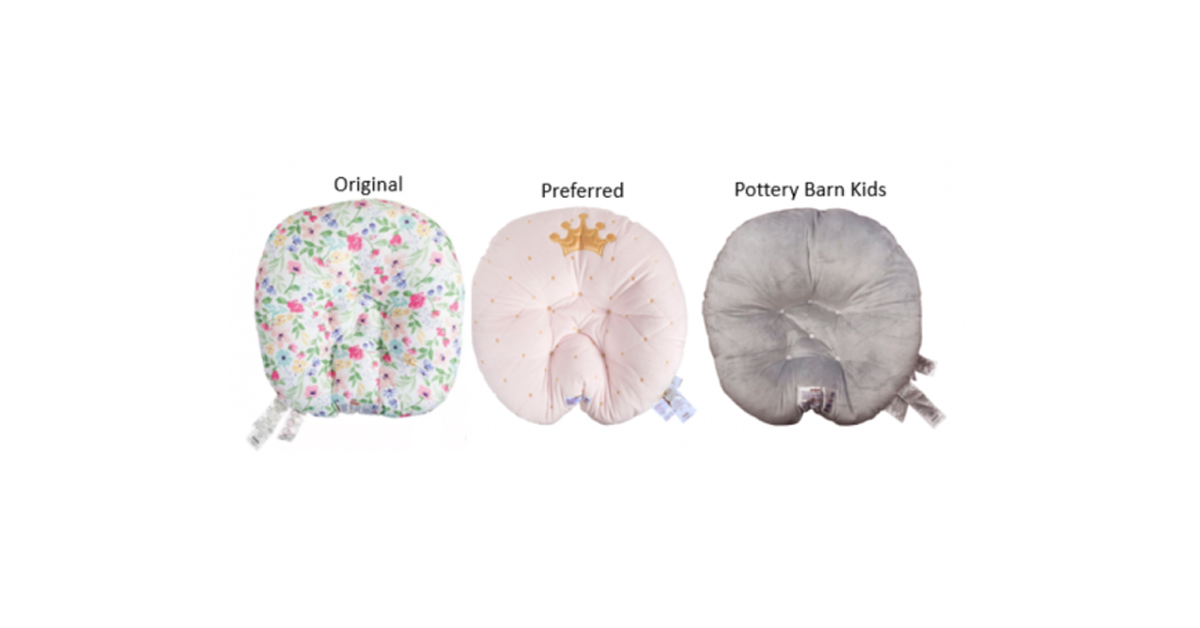 The Boppy Company has now recalled 3.3 million newborn loungers after the deaths of 8 infants. The U.S. Consumer Product Safety Commission (CPSC) and The Boppy Company announced the recall on September 23, 2021. Parents are urged to immediately stop using these products and to remove them from their homes.
The Boppy Company has now recalled 3.3 million newborn loungers after the deaths of 8 infants. The U.S. Consumer Product Safety Commission (CPSC) and The Boppy Company announced the recall on September 23, 2021. Parents are urged to immediately stop using these products and to remove them from their homes.
The infants reportedly suffocated after being placed on their back, side or stomach in these loungers. The deaths were reported between December 2015 and June 2020.
The recalled products include:
- Boppy Original Newborn Loungers
- Boppy Preferred Newborn Loungers
- Pottery Barn Kids Boppy Newborn Loungers
Prior to the recall, The Boppy Company sold the loungers from January 2004 through September 2021 for $30-$44. A total of 3.3 million loungers were sold in the U.S., including by Amazon, Walmart, Target and Pottery Barn Kids. Another 35,000 infant loungers were sold in Canada. The newborn loungers were sold in a number of colors and measured about 23 inches long, 22 inches wide and 7 inches high. Consumers can contact the company for a refund.
In the CPSC’s announcement, The Boppy Company said the infant lounger was not marketed as an infant sleep product and included warnings against unsupervised use. But the CPCS noted the loungers and pillow-like products are not safe near infants, who sleep so much and can quickly suffocate if they roll or turnover.
The CPSC emphasized babies should sleep on their backs, on a firm and flat surface in a crib, free from any blankets, pillows or padded crib bumpers.
The CPSC has been actively investigating the hazards of infant sleep products. On April 5, 2019, the CPSC and Fisher-Price issued a shocking consumer warning, stating that 10 infants, all 3 months or older, had died rolling over in the Fisher-Price Rock ‘n Play sleepers. Parents were initially urged to stop using the products when children turned 3 months or started to turn.
A week later, more than 30 reports of infant fatalities had emerged. On April 12, 2019, after nearly 10 years of sales, Fisher-Price issued a full recall of 4.7 million Rock n’ Play sleepers and warned parents to stop using the product.
The Washington Post later reported Fisher-Price had developed the Rock ‘n Play product after consulting one physician and had not conducted any clinical research. The newspaper would also report the number of infant deaths had risen to 90.
Infant Sleep Product Recalls and Deaths After the Fisher-Price Rock ‘n Play
After the Fisher-Price Rock ‘n Play recall, the CPSC announced several other infant sleeper recalls for products made by Kids II, Summer Infant, Graco and other companies. In June 2021, the CPSC announced another Fisher-Price recall for the 4-in-1 Rock ‘n Glide Soother, and warned that four infants had died while using the product between April 2019 and February 2020. This product went on the market in 2014 and 120,000 units were sold in the U.S.
At the same time, the CPSC announced the recall of 55,000 Fisher-Price 2-in-1- Soothe ‘n Play Gliders between November 2018 and May 2021. No fatalities were reported in association, but the CPSC warned consumers that, “Inclined products, such as gliders, soothers, rockers and swings are not safe for infant sleep, due to the risk of suffocation.”
In 2019, the CPSC released initial findings on infant sleep product research.
New Safety Standard For Infant Sleep Products
In June 2021, the CPSC approved a new federal standard for infant sleep products. Beginning next year, products intended or marketed for infant sleep must meet this new mandatory standard. Under the new standard, if an infant sleep product does not meet a current CPSC sleep standard, it must be tested to ensure the sleep surface angle is 10 degrees or less. The Fisher-Price Rock n’ Play had a 30-degree incline. Moving forward, infant sleep products must also comply with the CPSC’s safety standard for bassinets and cradles.
As the CPSC implements the new safety standard, the agency is also offering parents tips for putting infants to sleep safely. This starts with setting up your child’s sleep and play areas for safety.
Free Legal Consultation – Boston Product Liability Lawyers
The Boston product liability lawyers at Breakstone, White & Gluck have more than 100 years combined experience representing those injured or killed by defective products. If you or a loved one have been injured by a company’s negligence, learn your legal rights. Contact our law firm at 800-379-1244 or 617-723-7676 or use our contact form.
Child’s Death on Peloton Treadmill Prompts New Safety Warnings
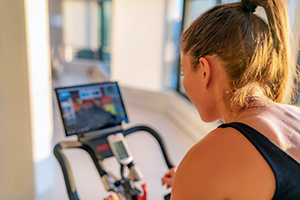
While convenient for parents, at-home treadmills, stationary bikes and fitness equipment can cause children serious injuries.
If you have jumped on the Peloton bandwagon, you are not alone. But many parents are exercising with more caution this week after learning about a child’s tragic death on a Peloton treadmill. Consumers are being urged to keep children away from the fitness equipment, as the Consumer Product Safety Commission (CPSC) investigates.
Peloton Interactive, Inc. became a household name during the 2019 holiday season, with a tongue-in-cheek ad campaign that poked fun at a husband and his “Peloton wife.” Then the pandemic began and Peloton became the fast rising star of the fitness industry. Many rushed to set up a high-end stationary bike or treadmill right at home, then logged into the fun digital app.
Peloton’s CEO announced the child’s death on a Tread+ last week in a letter, revealing the company was also aware of a small handful of other Tread+ accidents involving children. While he cited no injuries in these cases, NBC later reported that another child, a 3-year-old boy, had suffered serious injuries after being found trapped under a Peloton Tread+.
According to SaferProducts.gov, the child’s father had found the boy trapped under a Peloton Tread+ in early February. Initially, he was not breathing and had no pulse. The boy suffered a significant brain injury, along with a neck injury and petechiae on his face, which can occur when one’s blood flow is blocked. Peloton learned about the incident from the CPSC and said the company’s heart went out to the family.
If you or your child has been injured by an unsafe product, you should receive immediate medical care and report your injury promptly to help warn others. You do not have to make a report on your own. Report the incident with guidance from an experienced product liability lawyer at Breakstone, White & Gluck, who can advise you of your legal rights.
Treadmill Injuries
This is a timely investigation and conversation. Many families have purchased fitness equipment to use from the convenience of their homes as they juggle family and work responsibilities under COVID-19 restrictions. As a result, treadmill sales rose over 120 percent between March and October 2020, according to the Washington Post. Stationary bike sales nearly tripled.
Treadmills, though a convenient way to exercise from your home and office, are associated with many fitness equipment injuries. Across the country, emergency rooms treated an estimated 22,500 treadmill-related injuries during 2019, according to the CPSC. Children under 8 suffered about 2,000 injuries. There were 17 fatal injuries on treadmills between 2018 and 2020, including a 5-year-old girl.
Using Treadmills Safely in Your Home
According to Consumer Reports, children ages 1 to 6 suffer the most treadmill injuries of any age. Older siblings can also be injured when they just want to try the equipment and interactive features that look like video games.
Consider that young children are often just learning how to ride their first bike and developing their coordination skills. They are not strong enough to use a heavy, mechanical piece of equipment, not even for just a moment under an adult’s supervision.
Treadmill companies have a duty to warn consumers about the potential harm to children and how to prevent injuries to children. Manufacturers also have to watch how they showcase fitness equipment in ads and commercials. If a consumer sees a bike set up in a living room or family space, this may leave the impression that this is safe near children and families.
You can take steps to protect your children by securing fitness equipment in a separate room, away from your children and pets. Just as important, remove the safety key when you are done using the treadmill and fold it up if possible.
Mechanical Defects and Other Issues with Treadmills
When you buy fitness equipment, you may wonder whether you will enjoy using it or if it will be worth the investment. No one expects to be injured or see their child injured.
Yet there are many defective and unsafe products sold each year. This includes defective equipment which should have never been sold due to defective design or manufacturing error. Injuries can also happen when a manufacturer fails to warn the consumer about unsafe use. Manufacturers have a duty to promptly report when their products cause injury or wrongful death.
Many treadmill injuries can be traced back to poor manufacturing. Consumers have no warning about mechanical problems, such as spinning belts and erratic motors, until they use the machines. As a result, a consumer can lose their stop or fall, first hitting a moving treadmill and suffering head injuries or skin lacerations.
Improper set up can also contribute to injuries. Treadmills should come with instructions on where to safely place the equipment in your home or office. When a user misses a step, they are much more likely to get caught in the tread mat or hit a wall if they do not have adequate space. Read the instructions carefully as treadmills can come in different weights and sizes at times. As a guide, consider the ASTM International treadmill recommendations are to leave at least 6 1/2 feet of free space behind the treadmill. There should be about 1 ½ feet on each side. But your model may have different specifications.
Incomplete or incorrect labeling is another source for fitness equipment injuries. Without proper warning, the consumer cannot make the best decision about whether the product is safe for purchase and use in their home environment.
In addition to larger fitness equipment, be aware of small accessory equipment. Weights, air-filled exercise balls and yoga straps all look simple to use. But these fitness products can be poorly made with cheap materials, making them unsafe for both children and adults.
In one recent case, one of our attorneys led an investigation and negotiations which resulted in a $1.15 million product liability settlement for our client.
Free Legal Consultation – Boston Defective Product Attorneys
Breakstone, White & Gluck of Boston is committed to providing our clients with aggressive and thorough representation. If you or someone in your family has been injured by an unsafe product, contact our product liability lawyers. We serve clients across Massachusetts, including in Boston, Cambridge, Waltham, Framingham, the North and South Shores, Cape Cod, Fall River and Worcester. For a free consultation, call 800-379-1244 or 617-723-7676 or use our contact form.
Tips for Sledding Safely in Massachusetts
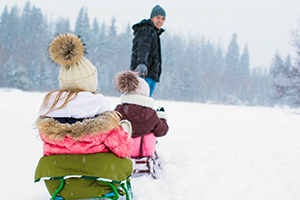 February has delivered perfect sledding weather for Massachusetts families. But before you head out with your children, remember the risk for injuries can rise during outdoor winter activities. Sledding, skating and skiing push our bodies beyond our daily routines as we face the elements of cold weather, snow and ice.
February has delivered perfect sledding weather for Massachusetts families. But before you head out with your children, remember the risk for injuries can rise during outdoor winter activities. Sledding, skating and skiing push our bodies beyond our daily routines as we face the elements of cold weather, snow and ice.
More than 20,000 children are treated for sledding injuries on average each year, according to the National Safety Council. Children can be injured when a sled hits a stationary object, in collisions with other sledders or by flipping or falling off their sled. Sledding accidents such as these can result in broken bones, lacerations, bruises, concussions, head injuries or more serious injuries.
You can protect your children by sledding with them and teaching them safety fundamentals by example. Please read our tips and enjoy a fun and safe sledding experience:
Choose a Safe Sledding Spot
After asking friends for suggestions and searching online, visit a few local sledding hills on your own, without your children. Walk to the top of the sledding area. Check your cell phone service from that point. Sledding hills may look similar, but they are not all equal. Choose a sledding area that is free from trees or rocks that could cause your child injury. Avoid hills that are too close to streets and parking lots.
Look for sledding hills that are snow-covered, not ice-covered.
A walkthrough is particularly useful for parents of young children, who are most vulnerable to the cold. Time your walk and compare this to your child’s regular play time in the snow and their physical capabilities. Think about whether your child can the hill – both the steepness for sledding and walking up the hill.
Sled During The Day. There is less visibility and colder temperatures at night. Your best approach is to sled during the day, when the sun is out.
Sled With Your Children and Supervise.
Sled as a Family. Plan at least one sledding day for your family each year. Besides being a lot of fun, this will create special memories. Sledding is also great way to get some fresh air and exercise for children, which we all need during the winter months.
Sled with Your Child and Their Friends. If your child or teenager wants to sled with friends, go along and watch. Enjoy this time but consider it a parenting assignment. You should really watch them just as you would if they were swimming, with your full attention. Keep your cell phone and a first aid kit within reach.
Sledding Manners. Teach your children to use good manners on the sledding hill. Even if there are no formal rules posted, your children should walk up the hill along the side of the sledding area. When sledding, they should not overcrowd sledders or attempt to run into them on the course. Once they reach the bottom of the hill, children should step off their sled.
—
Dress Warmly
When children are having fun, they may not realize how cold they are or be able to tell you.
Before you sled, make sure your child is wearing a warm winter coat, snow pants, hats, gloves or mittens. Purchase waterproof clothing. Your child should be warm and clothes should fit comfortably.
Take scarves off children before sledding. Also remove strings from clothing and accessories which can cause strangulation or get caught while your child sledding.
—
Safe Sleds and Helmets
Wear a Helmet. Encourage children to be aware of their surroundings and stay in control of their sleds as a good starting point to safety. Parents should also buy young children helmets to protect against head injuries. The Consumer Product Safety Commission advises parents can purchase helmets which meet the ASTM F14922 or Snell N-942 safety standard. If you have questions, we suggest you check the CPSC website which offers guidance on helmet designs for different activities. Another resource is your pediatrician. Ask for their specific suggestion for protecting your child.
Check Your Sleds. If you see sharp edges or cracks, replace your child’s sled.
Purchase a Safe Sled. There are many types of sleds: snow tubes, saucers or toboggans. Read age recommendations and product safety labels. Look for sleds which can be steered or have handles. Specifically look for ropes. While many sleds come with ropes, you can purchase sleds without any to protect young children against strangulation or getting caught on something.
Before you purchase a sled, make sure to check the Consumer Product Safety Commission website for safety recalls. Sleds can be designed with defects, such as faulty brakes on higher end models.
No Make-Shift Sleds. Do not allow your child to make their own sled out of furniture, cardboard or household objects. These products are not designed to carry your children on the snow.
—
Safe Sledding Techniques
Sledding Techniques. Pull your sled up next to theirs and show your children how to ride their sleds safely. Children should generally sit, hold the handles and ride face-forward down the hill. They should not ride stomach down or face first because they could flip or fall off. This can cause serious head or spinal cord injuries.
Riding Alone or Together? It’s a lot of fun to sled with your children or watch them ride together. The key is to find the right sled for the right number of sledders. And of course, the right hill!
Adults can pull young children. But for the most part, children should sled alone as they get older. It is important for them to steer their own sleds and hold on for themselves.
If you want to purchase a sled or tube that carries more than one child or adult, that’s a special experience. Read the manufacturer’s age recommendations, safety warnings and instructions. Look for a few online videos.
Free Legal Consultation – Boston Personal Injury Lawyers
Breakstone, White & Gluck is pleased to share our sledding tips as part of our Project KidSafe campaign. Through Project KidSafe, our goal is to help families protect against child injuries.
Breakstone, White & Gluck is a top-rated Boston personal injury law firm, with more than 100 years combined experience. We represent clients in personal injury cases in Boston and across Massachusetts. If you have been injured by someone else’s negligence, contact us for a free legal consultation at 800-379-1244 or 617-723-7676 or use our contact form.
How to Avoid Buying a Recalled Toy or Product This Holiday Season
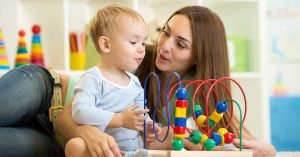 When a product is recalled, you may expect it will be removed from store shelves or online marketplaces. This is not always a safe assumption. In this year’s Trouble in Toyland report, U.S. PIRG reports several toys which were recalled this year were still being sold afterward on popular websites. Last year, a Wall Street Journal investigation found Amazon was selling thousands of unsafe or banned products.
When a product is recalled, you may expect it will be removed from store shelves or online marketplaces. This is not always a safe assumption. In this year’s Trouble in Toyland report, U.S. PIRG reports several toys which were recalled this year were still being sold afterward on popular websites. Last year, a Wall Street Journal investigation found Amazon was selling thousands of unsafe or banned products.
These are upsetting headlines. The Consumer Product Safety Commission (CPSC) recalls toys when they pose a safety hazard to children. Recalls are typically only called after a report or several reports of injuries or near injuries.
Once a toy is recalled, consider it unsafe to use. Our Boston product liability lawyers share our safety tips for steering clear of unsafe toys this holiday season:
Look Up Past Toy Recalls
Visit the CPSC website and review product recalls for 2020. According to U.S. PIRG, 10 products were recalled in the 12 months between the release of its 2019 and 2020 report.
You can visit this website after you have selected a toy and before you make a purchase. Or it may be helpful to start your holiday shopping there. Search for “toy recalls” or look through all the product recalls. Note that this website does not include automobile recalls. You can find these on the National Highway Traffic Safety Administration (NHTSA) website.
Beware of Amazon, Ebay and Marketplace Websites
Some retailers only offer their own products online. Others – such as Amazon and Ebay – are marketplaces where different vendors sell products and toys. These products may be new or they may be used.
Both the sellers and websites have a responsibility to make sure they are not selling recalled products.
In August 2019, the Wall Street Journal reported that Amazon was selling more than 4,000 items which federal agencies had declared unsafe or banned. Others had misleading labeling. At least 2,000 listings were for unsafe toys and medications.
The story showed the challenges Amazon has regulating its own marketplace. If you shop on Amazon or EBay, look for information about the seller. Is a company the seller or an individual? If you have never heard of the seller, you may not want to make a purchase.
Watch for Small Parts
When buying online, one potential danger is buying a toy which contains small parts. To protect your children, always read age recommendations and look for warning labels.
Toys which are designed for children under age 3 should be labeled if they contain small parts. Toys for children age 3 to 6 must also be labeled if they contain small parts. Read our blog on identifying small parts and toy safety warnings.
Beware of Purchasing Toys on Social Media Sites
You may have heard of Facebook Marketplace or other social media sites where you can sell used toys and products. Avoid buying used toys for children here during the holidays. We also suggest you avoid buying toys from these sites during other seasons, but especially during the holidays when many of us just wait for online sales to pop up.
There is no quality control. In most cases, the product is no longer in the packaging so you can’t read the safety warnings and age recommendations.
If you buy a used product this way, you really have no way of knowing when it was purchased. You may not have a product number or product instructions.
Children’s products, such as cribs, car seats and strollers, may carry the greatest risks. These products are frequently recalled and many model types look similar. While it is illegal to sell recalled products, it happens.
One frightening story came after Fisher Price and Kids II issued their crib recalls in early 2019. Despite this, 1 in 10 daycares was still using a Fisher Price Rock n’ Play sleeper in August 2019. In Nov. 2019, Consumer Reports reported found hundreds of the recalled sleepers available online, on sites such as Craigslist and Facebook Marketplace. In addition, Consumer Reports warned other products – including Ikea dressers recalled in 2016 were still being sold.
Free Legal Consultation – Boston Toy Safety Lawyers
With more than 100 years combined experience, Breakstone, White & Gluck of Boston specializes in the representation of clients injured by unsafe or defective toys and products. We are writing about toy safety this holiday season to help parents and families make safe shopping decisions. Read our past toy safety blogs.
For a free legal consultation, contact the Boston toy safety lawyers at Breakstone, White & Gluck at 800-379-1244 or 617-723-7676. You can also use our contact form.
FDA Warns Public About Dangerous Hand Sanitizers
In Massachusetts, we are washing our hands and using hand sanitizers as much as we can. We all want to do our part to prevent the spread of COVID-19. But now, it’s time to check your supply of sanitizer. The Food and Drug Administration (FDA) is urging the public to steer clear of nine brands because they contain methanol, a toxic substance.
Methanol is often used in industrial settings, where high concentrations of methanol vapor can lead to poisoning, according to the Centers for Disease Control and Prevention (CDC). It is also called wood alcohol and is highly flammable.
Methanol can also be harmful when you handle it or absorb it through your skin, according to the FDA. The greater risk, though, is children or adolescents who may drink or ingest hand sanitizer. Certain adults may also be at risk or may have consumed the clear liquid accidentally. Parents and caregivers should respond immediately if they suspect a methanol hand sanitizer poisoning.
The hand sanitizers identified by the FDA show particularly high levels of methanol. Testing found one product contacted 81 percent methanol and no ethanol.
The FDA had asked Eskbiochem SA de CV of Mexico to remove the hand sanitizers from the market last week. When there was no response, the FDA issued its public warning on Friday (June 19, 2020).
The FDA advises consumers to avoid these hand sanitizers:
- All-Clean Hand Sanitizer (NDC: 74589-002-01)
- Esk Biochem Hand Sanitizer (NDC: 74589-007-01)
- CleanCare NoGerm Advanced Hand Sanitizer 75% Alcohol (NDC: 74589-008-04)
- Lavar 70 Gel Hand Sanitizer (NDC: 74589-006-01)
- The Good Gel Antibacterial Gel Hand Sanitizer (NDC: 74589-010-10)
- CleanCare NoGerm Advanced Hand Sanitizer 80% Alcohol (NDC: 74589-005-03)
- CleanCare NoGerm Advanced Hand Sanitizer 75% Alcohol (NDC: 74589-009-01)
- CleanCare NoGerm Advanced Hand Sanitizer 80% Alcohol (NDC: 74589-003-01)
- Saniderm Advanced Hand Sanitizer (NDC: 74589-001-01)
The agency advised consumers to carefully inspect sanitizers in their home before use and immediately dispose of these in appropriate hazardous waste containers. Consumers should not flush sanitizer or pour it down the drain. Read the FDA notice.
Symptoms of Methanol Poisoning
Methanol exposure can lead to methanol poisoning and severe symptoms, starting with nausea, vomiting, headache and blurred vision. In the worst cases, those exposed can suffer permanent blindness, seizures, comas or permanent damage to the nervous system. Methanol poisoning can also result in death.
How Safe is Your Hand Sanitizer?
Hand sanitizer was in short supply for months. But you can now probably find your own bottle. If you use hand sanitizer, make a point to carry your own. Carefully read the label and regularly check the FDA website for recalls.
Hand sanitizer is a clear gel. It all looks the same, but each brand has a different alcohol content. For instance, your small pocket sanitizer probably has less alcohol than a nursing home or hospital, which has to meet greater fire safety regulations.
Our point is it would be hard to tell if you were being offered sanitizer with a high level of methanol or any dangerous substance. It’s better to control your own supply. Read about the FDA’s work to ensure the safety of hand sanitizers.
Wash Your Hands Safely
The FDA reminds consumers to regularly wash their hands often with soap and water for at least 20 seconds. When soap and water are unavailable, the CDC recommends an alcohol-based hand sanitizer which contains at least 60 percent ethanol. Visit the FDA’s website to learn more about hand sanitizer safety.
Free Legal Consultation – Boston Personal Injury Lawyers
Breakstone, White & Gluck has extensive experience representing those injured by defective products, including those which contain toxic chemical substances.
Manufacturers of cleaning supplies, hand sanitizers and detergents have a responsibility to produce safe products and conduct thorough testing before distribution. End users, including restaurants, industrial workplaces and labs, also have a responsibility to follow safety guidelines when using chemical products. Mishandling chemicals can lead to chemical exposure, fires or serving clients unsafe food and beverages.
If you have been injured by a chemical exposure or explosion, learn your legal rights. For a free legal consultation, contact Breakstone, White & Gluck at 800-379-1244 or 617-723-7676. You can also use our contact form.



